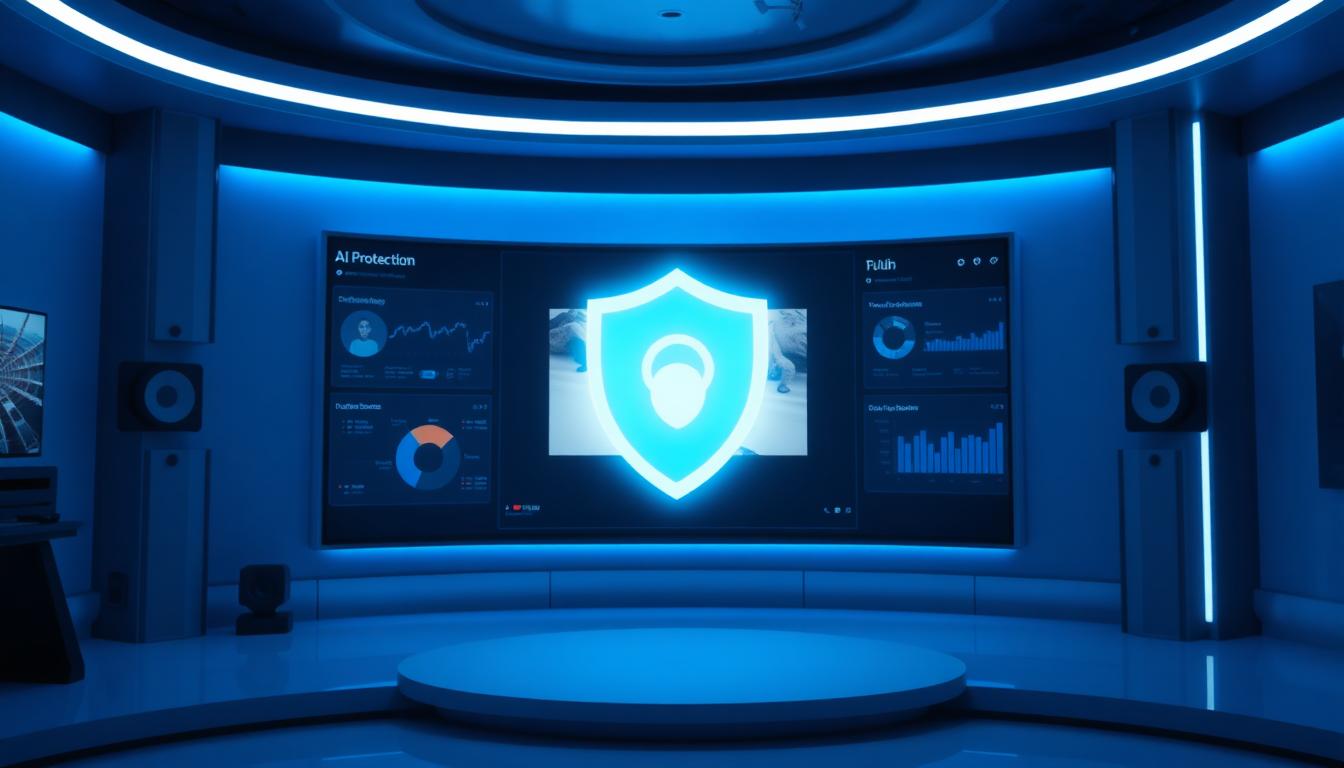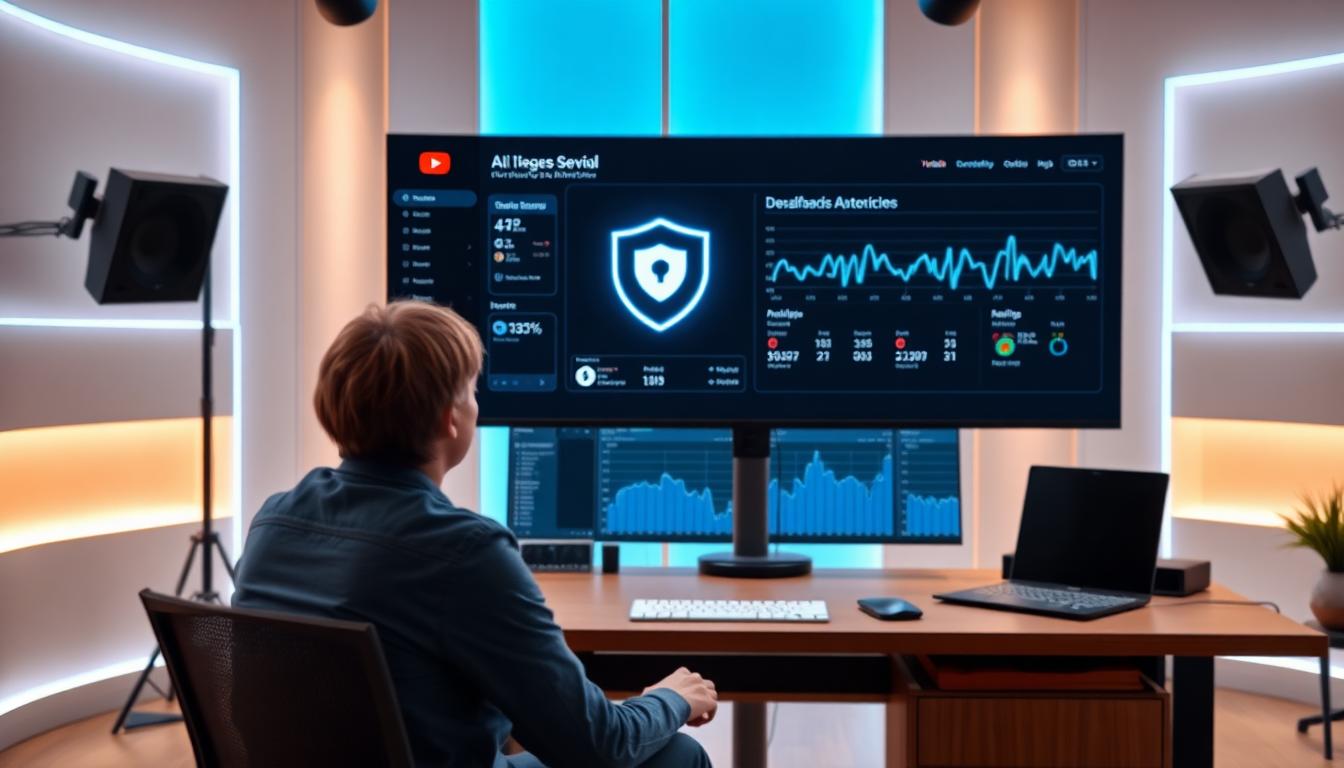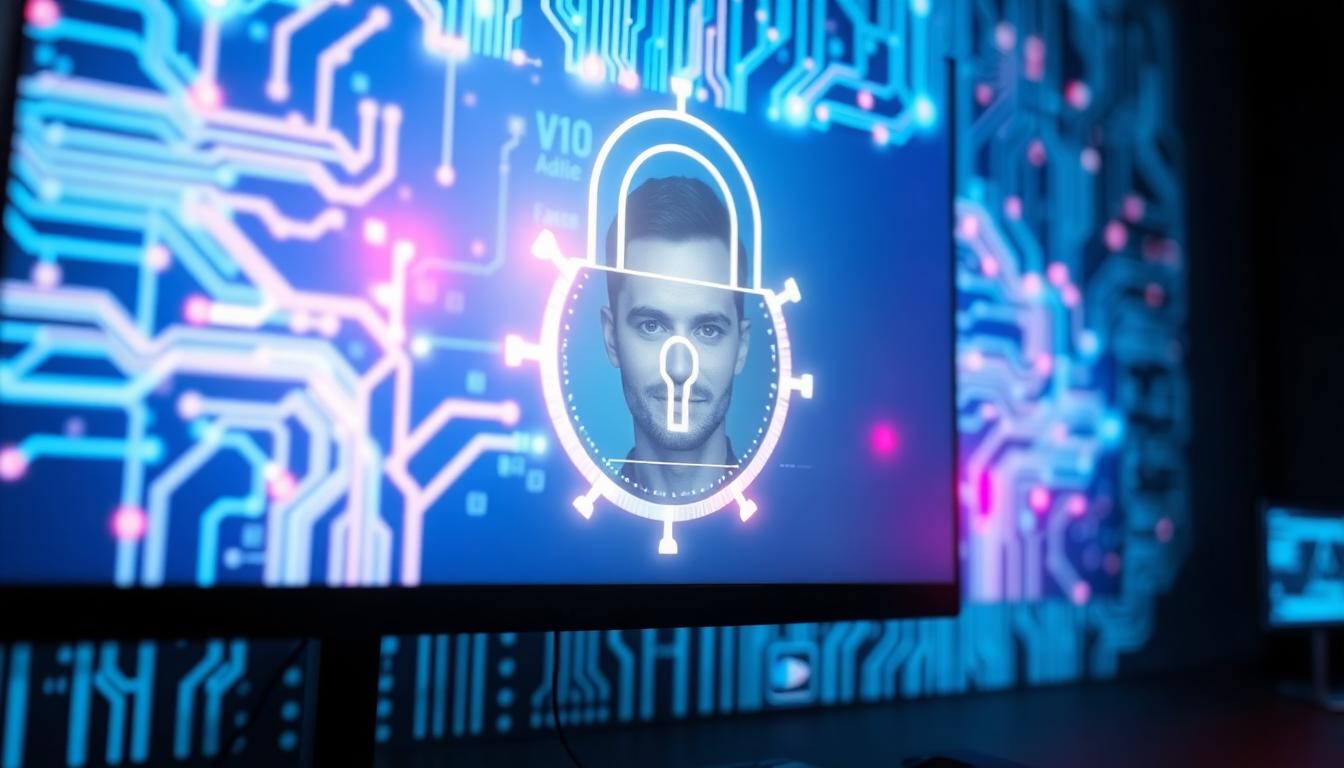Worried about videos or audio clips online that just seem a little too real? YouTube just rolled out a powerful suite of AI tools, all crafted to help creators, public figures, and viewers fight back against the rising tide of deepfakes. Deepfakes use AI to stitch together someone’s face or voice onto videos or audio without their consent, making it tough to tell what’s real and what’s manufactured. This technology can put privacy at risk, stir up confusion, and fuel the spread of misinformation across the internet.
With these new deepfake protection tools, YouTube aims to put real control into the hands of anyone with a public presence—or even just a passion for making videos. The suite focuses on helping creators find and remove deepfake content, while also supporting tighter laws around digital replicas. If you’re curious how this will change the way people manage their online identity and creative work, or how these features compare with other solutions for securing voiceovers and music in your content, you can check out resources like the Murf AI review 2025.
Bottom line? YouTube’s push for deepfake protection tools is a big step in keeping the internet safer, more transparent, and easier to trust—for everyone who uploads, watches, or shares content online. Ready to see how it all works? Let’s get into the details.
Understanding Deepfakes and Their Threat on YouTube
YouTube is a top destination for digital creativity, entertainment, and public voices—but it’s also become a target for the rise of deepfakes. Deepfakes blur the boundaries between reality and fiction, often leaving both veteran creators and casual viewers second-guessing what’s true on their favorite channels. Here’s a simple guide to what deepfakes are, how they’re made, why they’re risky, and why deepfake protection tools deserve everyone’s attention.
 Photo by cottonbro studio
Photo by cottonbro studio
What are deepfakes?
Deepfakes are videos or audio clips created with artificial intelligence, making someone look or sound like they’re doing or saying things they never did. Think of it like high-tech puppetry: AI “learns” from pictures and voice recordings, then produces new content where the person’s face, mannerisms, or even voice are copied. The result? Something eerily realistic—a video, for instance, that shows a celebrity or creator speaking words they never spoke, all stitched together by code.
This technology isn’t just for movie magic. When misused, deepfakes can create convincing scenarios that were never real, sometimes only detectable by the smallest of tells (a flicker in the eyes or a lip-sync that’s just a bit off).
How are deepfakes made and misused?
Creating a deepfake usually starts with collecting loads of images, video clips, or audio samples of the person to be mimicked. Machine learning models analyze these files, mapping out everything from facial expressions to unique voice inflections. The AI then re-creates those details in new or altered clips.
In the wrong hands, deepfakes can be used for:
- Phishing or scam attempts where someone impersonates a creator or public figure.
- Fake confessions or statements meant to embarrass, frame, or damage reputations.
- Spreading misinformation by showing influencers “endorsing” products, ideas, or movements they’ve never heard of.
These risks aren’t far-off speculation. On YouTube, there have already been cases of viral fake interviews with famous creators and false “leaked recordings.” Some viewers took these videos at face value, leading to confusion, outrage, or even legal trouble.
Real-world risks for creators and viewers
If you’ve built a YouTube channel around your face or voice, deepfakes can be a real threat. Unauthorized clips can appear overnight, attracting thousands of views before you even spot them. Fans, brands, or even your own collaborators might get fooled—potentially sabotaging partnerships and trust.
To make it more concrete, recent stories have covered everything from deepfake news anchors “reporting” fabricated stories to AI-generated parodies taken as real by confused fans. Even personal drama can get amplified, as seen when creators’ likenesses are dropped into phony arguments or scandals.
Why deepfake protection tools matter for everyone
Whether you’re making videos, streaming, or just binge-watching your favorite channels, deepfake protection tools matter. Here’s why:
- They work behind the scenes to catch fakes before most viewers notice.
- Report and takedown options help creators react fast when someone misuses their identity.
- Clear labeling makes it easier to spot synthetic content and trust what’s authentic.
- Better transparency means a safer, more honest platform for watching and sharing.
On a practical level, these tools are essential for keeping your channel secure and your audience informed. They raise the barrier for scammers and make it far less likely your digital identity will be hijacked.
For creators who want more control, YouTube’s recent updates aim to offer helpful, easy-to-use features to stay ahead of deepfake threats. You can learn more from YouTube’s official announcement on their responsible AI tools and privacy updates, which give a deeper look at how these features will help protect channels both large and small.
The push for deepfake protection tools isn’t just about policing bad actors; it’s about keeping trust at the heart of YouTube. Whether you’re uploading your first video or managing a channel for millions, these tools set a new standard for digital safety and authenticity.
YouTube’s AI Suite: Deepfake Detection and Likeness Protection
YouTube’s new deepfake protection tools are more than just filters or basic reporting forms. They give creators and public figures the power to spot faked content using their face or voice and act quickly. The system blends smart AI detection, clearer reporting paths, and legal muscle thanks to the No Fakes Act of 2025. Let’s take a closer look at how these features work—and what they mean for anyone who shares their likeness online.
 Image created with AI
Image created with AI
How the Deepfake Protection Tools Work
YouTube’s AI suite scans uploads for patterns typical of deepfakes—like oddly blinking eyes, mismatched lips, or audio out of sync. It also listens for shifts in speech and checks for signs that a voice was pieced together with AI. If the system spots something off, it flags the video to be reviewed or automatically labeled as synthetic content.
To keep the tech grounded in real creator experiences, YouTube connected with high-profile creators—including MrBeast and Mark Rober—to provide hands-on feedback. These partnerships help the system learn the difference between clever editing and actual deepfake trickery. It means the tools won’t flag your special effects prank as fake news, but they’ll step in when your face appears in a video you never filmed.
So, what about user control? Here’s where things get practical:
- Creators can set up likeness management—that means uploading reference images or audio of their own face and voice. When the tool detects a match in someone else’s video, it notifies the rightful owner.
- Easy reporting: If you spot a deepfake of yourself, you can request removal through a guided support process. No legal jargon, no complicated forms.
- Proactive tools: You can protect your channel’s uploads by adding AI watermarks or toggling on extra reviews for new videos.
YouTube’s deepfake protection tools also flag synthetic singing or manipulated content, so you’re covered whether you’re a vlogger, musician, or podcaster. The system doesn’t just look for faces—it listens for stolen voices, too. Curious to see how this fits into the wider toolset and ongoing rollouts? Check out this expanded suite of tools for creators for more behind-the-scenes insight.
What the No Fakes Act of 2025 Means for Creators
 Image created with AI
Image created with AI
The No Fakes Act of 2025 makes it clear: your face, your voice, and your digital likeness are yours to protect. Before this law, policing unauthorized digital replicas was confusing and slow. Now, with the Act in place, you can tell YouTube if a video uses your image or voice without permission, and the company has to respond.
Here’s how it works in plain English:
- Gives creators the legal right to control use of their likeness—if someone uploads a video with AI-generated versions of your voice or face, you can demand it be taken down.
- Speeds up removal: Platforms like YouTube must react promptly to requests to remove deepfake content.
- Protects everyone, not just big names: Whether you’re a famous YouTuber or a rising star, you get the same protection.
- Inspired by Content ID: If you’ve used YouTube’s copyright tools, this is similar—only now it covers faces, voices, and video likeness as well.
By joining forces with lawmakers, YouTube is making sure you don’t need a team of lawyers to protect your online presence. These legal tools work directly with the deepfake protection features inside YouTube’s platform. The support is real and backed by law, which is especially important now that anyone can create convincing fakes in minutes. You can learn more about YouTube’s stance in their release on how YouTube supports the NO FAKES Act.
The bottom line: the combination of AI-powered deepfake protection tools and clear, fast legal backing offers creators a stronger shield than ever before. If you’re serious about keeping your channel and your personal image safe, the new tools and the No Fakes Act are a game-changer.
Impact of AI Deepfake Protection on YouTube’s Community
YouTube’s rollout of deepfake protection tools doesn’t just mean new features for creators. It marks a major shift for the safety, authenticity, and trust across the entire community. Whether you upload videos, watch tutorials, or follow trending creators, these changes ripple out in a big way. The effects stretch far past just policing bad actors; they help restore confidence in the videos people watch and share every day.

Restoring Trust Through Deepfake Detection
Being able to spot a fake is key to building trust, especially when AI can mimic voices and faces so convincingly. YouTube’s tools act like a digital security team, quietly working behind the scenes to weed out videos that use someone’s likeness or voice without permission. By flagging or labeling manipulated content, the platform chips away at confusion. When viewers know that content is regularly checked for authenticity, trust starts to return—one video at a time.
Deepfake protection tools also send a clear message to would-be scammers: it’s much tougher to pull off a convincing fake when the world’s top video site checks your work. For the average user, this means less second-guessing, fewer viral scams, and a stronger sense that what they’re watching reflects reality. When viewers sense that YouTube prioritizes transparency, they feel more comfortable sticking around and exploring new channels.
Stopping Scams and Misinformation Before They Spread
Fake news, impersonation schemes, and misleading content can spiral out of control fast online. One convincing deepfake can turn a harmless moment into a crisis. The new tools don’t just react after the fact; they catch fakes at the source. With AI scanning uploads for signs of manipulation in real time, troublemakers lose their head start.
Here’s what this means for everyday users and creators:
- Reduced risk of scams: Phishing, fake confessions, or exploitative “leaks” won’t stick around for long if deepfakes are caught early.
- Cleaner feeds: Fewer misleading videos make the platform less stressful to navigate.
- Stronger brand safety: Companies and creators don’t have to worry as much about their image being hijacked for false endorsements.
In practice, YouTube’s deepfake protection tools benefit anyone who values honesty in online content. The whole community becomes less vulnerable to quick-hit scams and snowballing misinformation.
Building Confidence in YouTube’s Response
Seeing YouTube invest in these safeguards boosts community confidence at a time when trust in social media can feel shaky. By expanding AI-driven detection to more creators and including protections for both faces and voices, YouTube shows it’s serious about catching up with new tech threats.
YouTube has outlined its ongoing approach in their update on New tools to protect creators and artists. Their efforts aren’t a one-time fix. These tools will keep evolving, learning from new AI trends and real user experiences to make protection smarter and more flexible over time.
The best part? Everyone benefits. Artists, musicians, influencers, and everyday users all get a stronger sense of control over their online identity. Instead of waiting on outside watchdogs, YouTube’s built-in protection creates an environment where users know that their safety—and the integrity of their favorite channels—actually matters.

A Safer Space for Expression and Growth
When creators, artists, and viewers trust the system, YouTube becomes a more open and creative place. People don’t have to worry that their face or voice will turn up in videos they never agreed to make. Aspiring influencers can share without second-guessing every upload. Brands can experiment without constant fear of impersonation.
For those wanting even more on how creators can protect their content in the AI era, YouTube’s development echoes similar approaches outlined in their responsible AI updates. The deepfake protection tools are part of a broader commitment to keeping the community supported, honest, and inspired—while adapting as the tech landscape changes.
In short, deepfake protection isn’t just about stopping the bad stuff. It helps everyone relax and focus on what they do best: sharing, engaging, and creating with peace of mind.
Conclusion
YouTube’s rollout of deepfake protection tools sets a strong standard for how tech platforms can tackle AI misuse—putting real power back in the hands of creators and anyone who values their online presence. By blending smart detection, easy removal, and legal support, this AI suite helps creators safeguard their identity and prevents viewers from being misled. These innovations not only limit the reach of scams and fake content but also highlight the importance of creator rights in today’s digital world.
This approach is shaping a model for other platforms facing similar challenges. As deepfake technology keeps getting smarter, the responsibility for detection and protection will keep growing. YouTube’s updates show what’s possible when a community steps up and demands real solutions that put safety first. Stick around, join the conversation, and help build a digital space where everyone can create, share, and trust what they see and hear. Thanks for reading—your attention and feedback help keep these protections moving forward.

















